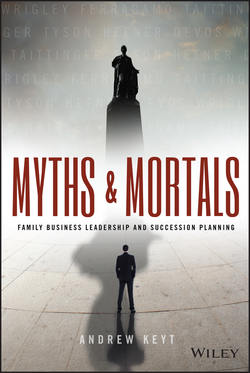Читать книгу Myths and Mortals - Keyt Andrew - Страница 13
На сайте Литреса книга снята с продажи.
Chapter 1
Making of a Myth
How stories of heroism help and harm a successor
ОглавлениеHollywood Boulevard, the early 1920s. It was the Golden Age of Cinema. Starlets were fetching their dreams, and so was a young shoemaker from Italy.
A scrap from a scrapbook, the photograph reads like a chapter from an autobiography. A lady sits on a curvaceous mohair sofa, her foot propped on a stool. Salvatore Ferragamo stoops over in white overalls – “like an artist or painter,” his son, Massimo, chairman of Ferragamo USA, recalls – sketching a shoe as he studies the size and curve of the lady's foot.
“In that picture is everything,” Massimo says. “My father always said, ‘Whenever a customer comes into the store, you should make them feel like a princess. And each time a princess walks into your store, you should make them feel like a queen.’” Salvatore Ferragamo crafted shoes for heirs of royalty, even those who knew no pedigree, title, or crown. It was his talent of interpreting peculiar and extravagant requests, like a shoe with ostrich feathers, matched by his heart for customers, that made him wildly popular.
Decades later, Marilyn Monroe sat on Ferragamo's sofa. She was beautiful but short. To be taller, she always wore four-and-a-half uncomfortable inches of heel. But Salvatore, who studied anatomy at the University of Southern California, made a shoe comfortable that she felt beautifully tall in. Massimo says this was typical of his father: “Everything he did throughout his life, he did with incredible heart and creativity.”
Salvatore died when his youngest son, Massimo, was almost three years old. But even today, his father is ever-present: “Almost every day I find myself telling the story of my father,” he says. “When one leaves a legacy like he left, it's indestructible.”
Конец ознакомительного фрагмента. Купить книгу
